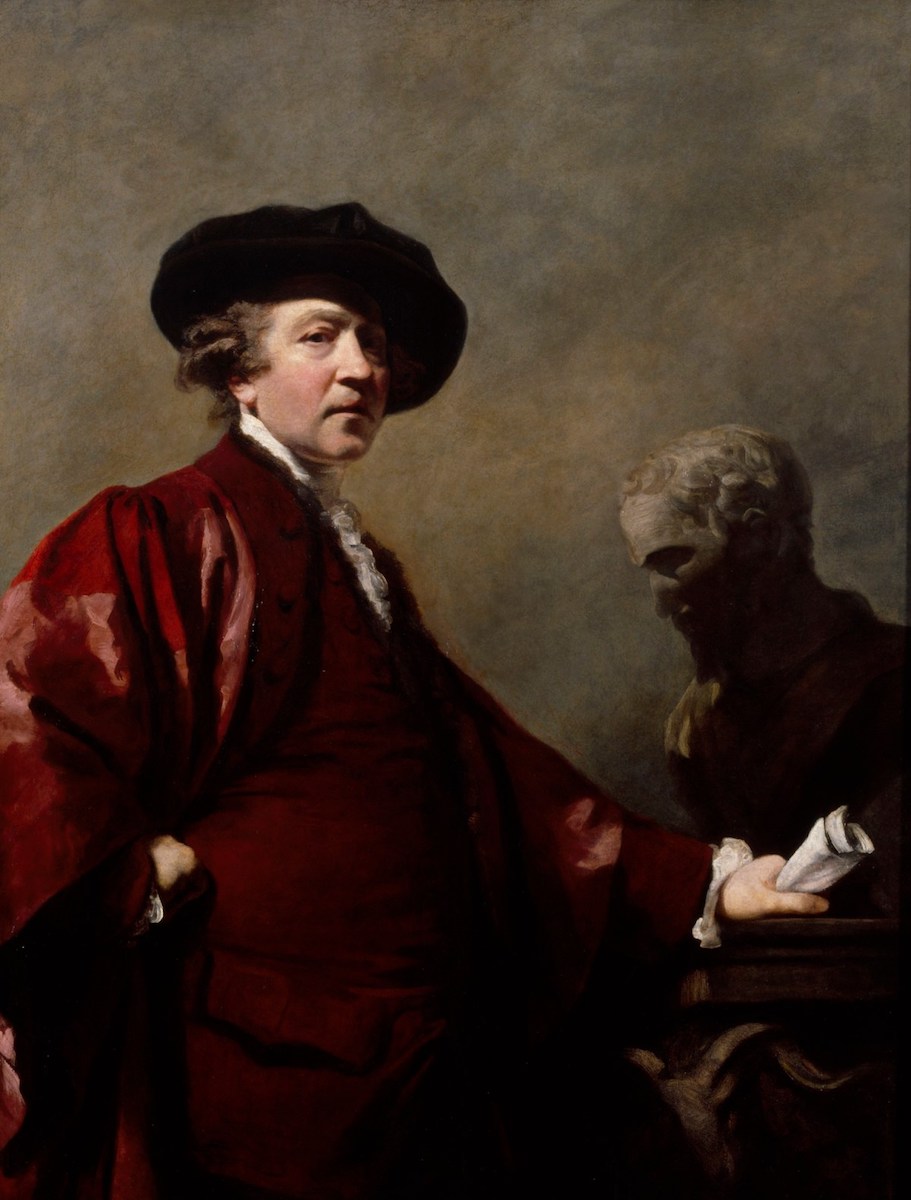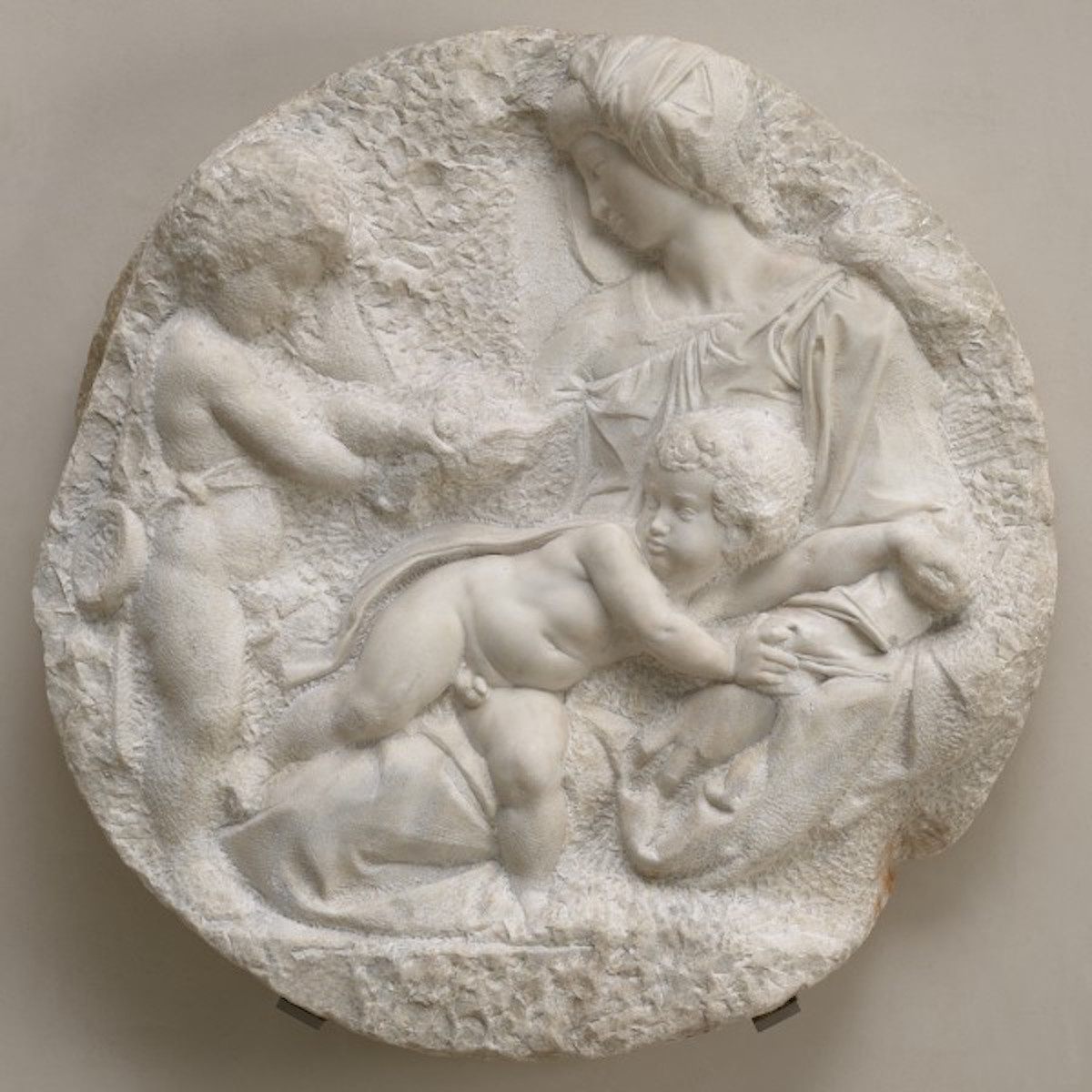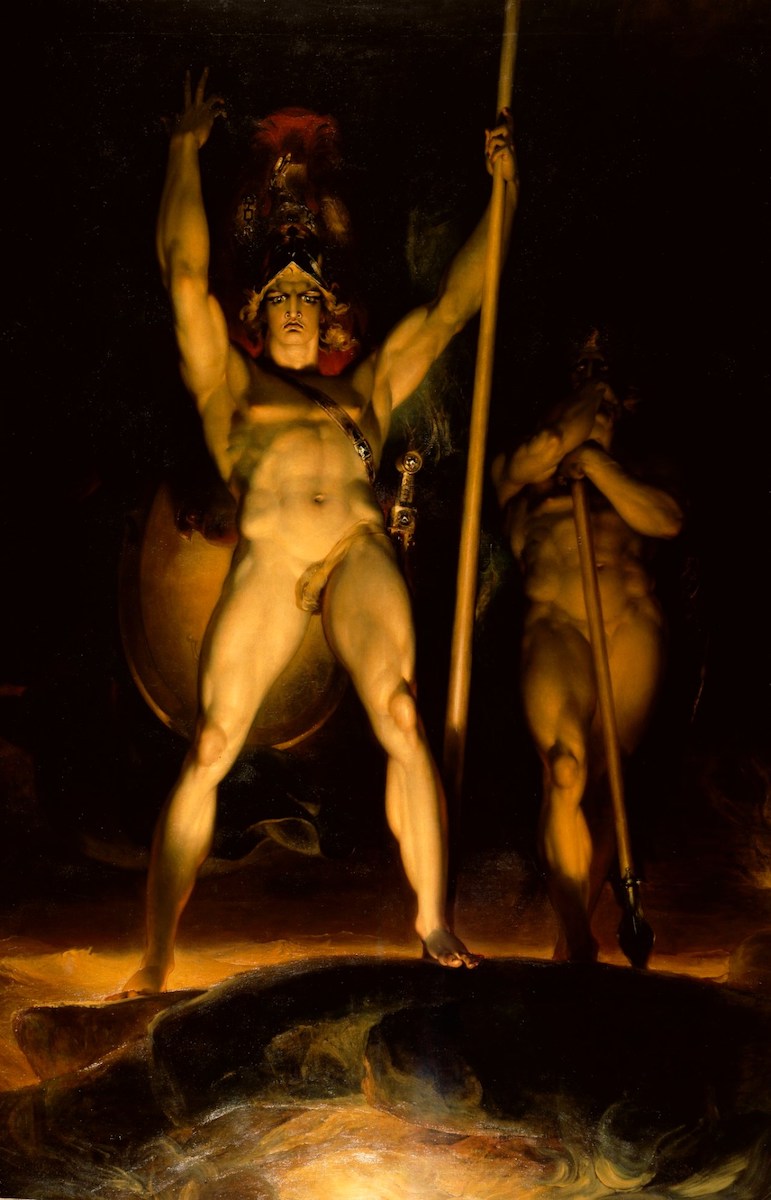 [1]
[1]“Does great art begin with studying nature, or studying the great art of the past?” So asks the online introduction to The Making of an Artist: The Great Tradition, an exhibition of the collection of the Royal Academy in London. The answer, much like that for the questions of nature vs. nurture and chicken or egg, is yes. Talk about a fluid subject. It’s instructive to look at Gustave Courbet, the seminal nineteenth-century realist and precursor to Impressionism. Courbet advocated the observation of nature and talked down the study of masters. On a visit to Manet’s studio while the younger artist was painting The Dead Christ with Angels, he teased “You’ve seen angels, to know if they have a behind?” The facts were more complicated. Courbet spent several years copying paintings by old masters, and his version of working from nature—as was then common—frequently entailed studio-based invention. When he visited another young Impressionist, Monet, and found him working on an immense canvas in an outdoor garden, Courbet could not understand why a painter would endure such logistical difficulties to work from nature.
The Impressionists present multiple variations on the choice of masters or nature. Manet’s most controversial paintings were based on Renaissance compositions, their subjects cheekily updated to nineteenth-century France. Monet tried copying at the Louvre, but was more interested in painting the views he saw from the museum’s windows. He claimed that nature was his touchstone, but he knew what to take from Turner—himself a fascinating amalgam of classical influences and observation of light—and considered Corot, who absorbed classicism while studying in Italy, the greatest landscape painter of all. Degas possessed the deepest understanding of his predecessors, studying the Italian, Dutch and Flemish masters, and grafted what he’d learned onto his piercing observations of Parisian life. Cézanne famously sought to square plein-air painting with classical design, wanting to make something permanent from the transience of Impressionism. If you want to determine a common denominator whither great art begins, good luck.
 [2]
[2]The Making of an Artist draws from the Royal Academy’s collection, with sections on drawing and architecture that display classical casts used for two centuries of the RA pedagogy. Amid the casts, there is that of Laocoön and his Sons[3] (Roman version of a lost Greek original), which is said to have inspired Michelangelo when it was unearthed in Rome. There’s also the real thing: the only marble by Michelangelo in Great Britain, The Virgin and Child with the Infant St John, known as the Taddei Tondo. It is a bas-relief whose design balances movement with harmony, roughness of execution with polished passages. When it arrived at the Royal Academy in 1830, it was praised for “showing the more finished parts to advantage, and causing those less perfect to become masses of shadow, having at a distance all the effect of a rich picture in chiaroscuro.” The writer was John Constable, who also made a sketch of the sculpture. The exhibition displays paintings large and small by Constable, whose inspiration was the English countryside where he spent his life. He was as beholden to nature as a 19th century landscape painter could be. And he frequently made copies of landscapes by old masters.
 [4]
[4]The show’s first work is an immense and uncharacteristic fantasy by Thomas Lawrence, Satan Summoning His Legions. A male nude towers above us, posturing imperiously. The scowling emperor of the underworld may be weighing our souls or merely adjudicating between neoclassicism and romanticism. A contemporary critic got it right, and memorably so: “The colouring has little analogy to truth as the contour, for it is so ordered that it conveys an idea of a mad German baker, dancing naked in a conflagration of his own treacle!” Lawrence never went down that road again. Fortunately, nearby is an unfinished self-portrait to remind us that he was the greatest English portraitist of his era (The frustrating thing about the virtual tour, especially if you’re viewing it on a phone, is that one can not zoom in close to the artwork or read the accompanying plaques). Reversing direction, beyond the Constables is Turner’s Dolbadern Castle, North Wales[5], a dark early landscape in which the artist messed with the actual topography of the scene for dramatic effect. Turner studied his precursors and often employed classical narrative; he also sketched obsessively from nature, filling notebooks with thousands of small watercolors chronicling his travels across Europe. In the end, influences and nature itself appeared irrelevant. Turner’s late watercolors depict the immolation of material substances by pure light.
A blandly accomplished allegory by Angelica Kauffmann shows a female artist drawing from a cast of the Belvedere Torso, which invites comparison to the current exhibition of Artemisia Ghentileschi’s paintings[6] of independent women at the National Gallery. Apples and oranges, certainly, but the oranges at the National Gallery are so much juicier. An aggrandizing self-portrait by Joshua Reynolds manages to invoke both Rembrandt and Michelangelo.
 [7]
[7]And if the most sincere flattery is indeed imitation, there is a replica of Leonardo’s Last Supper, attributed to Giampietrino and Giovanni Antonio Boltraffio. The copy was painted perhaps twenty years after Leonardo gave up on the fresco, and offers a good idea of the original’s appearance before its current ruinous condition. In sum, what’s presented is a reasonably eclectic collection, one that tacitly leans toward the study of past art. It is, after all, the Royal Academy.
 [8]
[8]There are pitfalls to hewing exclusively to either the study of nature or the art of the past. In Kenneth Clark’s history of the genre, Landscape into Art[9], he proposed the weakness of Impressionism was its fascination with ephemeral effects at the expense of classical design, a situation that, as already noted, Cézanne sought to reconcile. But the freedom of plein-air painting that has made it appealing to a multitude of less serious artists prioritizes nature, without requiring compositional organization. If you want to know which students haven’t studied composition—i.e. other painters—take them painting outside. They’re the ones who are lost without a predetermined studio motif.
The cult of plein-airism has its counterpart in the studio, where ateliers are constructed on the bones of illustrious forefathers. The master may be Rembrandt or some nineteenth-century model, but the visual template is to be respected even if it means reshaping nature to fit. We recognize styles that barely evolve over the course of generations, so closely do they follow the traditions of ateliers in London, Moscow, or New York. Observation of nature is subordinated to a recognizable trademark.
What’s required is a balance, so that the studies of old masters and nature become so much a part of one’s thought process as to be nearly indecipherable. I’m reminded of that every time I draw the figure or paint a tree and notice the presence of organic, harmonious structure. Artists see these patterns in nature. From the ancients to the Rococo to Mondrian, great artists bake these structures into their work; we see them and return to nature refreshed. At some point we realize that great art of the past is not distinct from nature, but a distillation of it. It is all part of the artist’s visual curriculum.
The Making of an Artist: The Great Tradition[10] continues at the Royal Academy of Art through December 31, 2020.
- [Image]: https://asllinea.org/wp-content/uploads/2020/10/hadu6nmhagco3iyed05e.jpeg
- [Image]: https://asllinea.org/wp-content/uploads/2020/10/i6yitgthzyfzcow5guxz.jpg
- Laocoön and his Sons: https://www.royalacademy.org.uk/art-artists/work-of-art/laocoon-and-his-sons-roman-version-of-a-lost-greek-original
- [Image]: https://asllinea.org/wp-content/uploads/2020/10/suibdyma1dj4nms31kff.jpeg
- Dolbadern Castle, North Wales: https://www.royalacademy.org.uk/art-artists/work-of-art/dolbadern-castle-north-wales
- current exhibition of Artemisia Ghentileschi’s paintings: https://www.nationalgallery.org.uk/exhibitions/artemisia
- [Image]: https://asllinea.org/wp-content/uploads/2020/10/hqgcntwbeh7kyfkolkbm.jpeg
- [Image]: https://asllinea.org/wp-content/uploads/2020/10/xieg0slpzmrfngdw0xj3.jpeg
- Landscape into Art: https://www.amazon.com/Landscape-into-Art-Icon-Editions/dp/0064300889/ref=sr_1_1?dchild=1&keywords=landscape+into+art&qid=1602251665&s=books&sr=1-1
- The Making of an Artist: The Great Tradition: https://www.royalacademy.org.uk/exhibition/the-making-of-an-artist-the-great-tradition